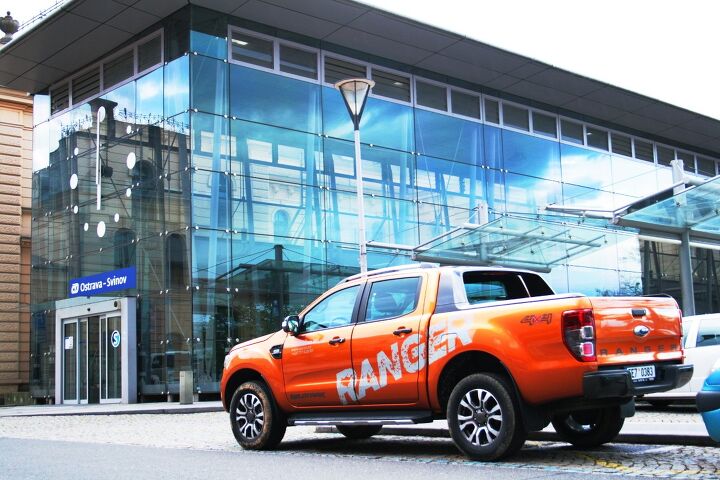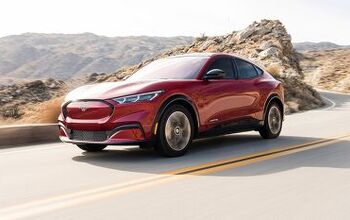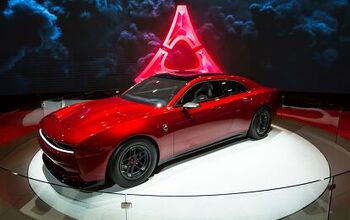Ford Ranger 3.2 TDCI Wildtrak Review - An F-150 From Another Universe
Over the last two or three decades, the American full-size pickup truck has morphed into something thoroughly and completely different. What was once utilitarian and practical is now imposing, luxurious.
Is it possible that the truest successor of the original F-Series is currently sold in Europe with a five-cylinder diesel engine?
I tested the new Ford Ranger to find out.
Until now, I haven’t paid the Ranger much attention. Like most people in Europe, I considered it a wannabe. In the past, it was a little Japanese truck (a re-badged Mazda B-Fighter) that played American dress-up as it unsuccessfully competed against the likes of the Toyota Hilux, Nissan Navara and Isuzu D-Max.
Reasons to take the Ranger seriously were few. It was never cool like its big American counterparts, and the practical value of large (by our standards) pickups in Europe is limited. So it was to my great surprise when, after an up-close encounter with the first reviewed example, the new Ranger revealed itself to be larger than expected.
While the pre-facelift model masked its massive size with a smooth, aerodynamic front end, the new truck’s blunt nose reminds you that this is no longer a tiny Japanese truck.
I still didn’t realize the sheer size of the thing until I parked it in front of a grocery store and found I could barely fit it between the lines. That’s strange, I thought. I frequented the same supermarket with a Lincoln Town Car, and I even parked a Suburban in the same lot once or twice. The Ranger seemed at least as unwieldy as the Town Car, and almost on par with Suburban.
Upon arriving home, I looked up the Ranger’s dimensions, and indeed the Ranger Crew Cab with 5-foot bed is almost identical in size to the ’04 Ford F-150. That’s not only big for Europe; that’s big for anywhere — except the last decade in America.
However, the Ranger’s girth is the only thing that mimics any of its bigger brothers from the last 30 years. Our test unit, in just-above-base XLT trim, was powered by a 2.2-litre four-cylinder turbodiesel engine with a six-speed manual. While power is sufficient and engine noise isn’t terrible, its transmission is a farm equipment time capsule from the 1950s; it took me two or three tries to find a way to shift into sixth. The Ranger’s suspension bobbed over road imperfections, and its interior, while spacious, resembles that of a work van.
If you know of a way to use a four-cylinder-powered crew-cab truck with a 5-foot bed as a work vehicle, this will serve you well. It’s easily one of the better pickups on the European market (I still can’t get rid of horrible memories of driving a Nissan Navara). With dubious utility of small pickups and prevalence of vans in Europe, though, I expect most of the Rangers sold here will serve partly as status symbols, or a more affordable (especially in running costs) way of getting a piece of American lifestyle. In that sense, the four-cylinder XLT won’t cut it in that department. I would rather buy a five-year old Ram 1500 Hemi with an LPG conversion than drive this.
I needed another Ranger. And luckily, I found one.
The next truck was a top-of-the-line Ranger Wildtrak. It only comes in crew cab with a 5-foot bed, and you can have it with 3.2-liter five-cylinder turbodiesel engine producing a mighty 200 horsepower. Also, you can have it with an automatic (although ours was a six-speed manual). Ford offers the less fancy Limited trim for those looking to save some coin. It lacks the Wildtrak’s standard roof rack, navigation, rear camera, 18-inch wheels and ambient interior lights (everything save the ambient lights is available as an option on the Limited), but it’s available in a more workmanlike Supercab version with a 6-foot bed. The longest 7-foot-6-inch bed is solely available on the poverty spec XL.
The fancy trim and bigger engine turn the Ranger into something else altogether. What began as a spartan and utilitarian work truck is now closer to the current crop of American full-size pickups. The interior, with leather/cloth mix upholstery, may not be as nice as an F-150 Platinum or Ram Laramie Longhorn, but it certainly feels nice — maybe even a bit luxurious. Add the new tech — from fancy dash with analog speedometer in the middle, multi-functional LCDs on both sides, and touchscreen infotainment with navigation and rear camera — and the Ranger resembles a modern “lifestyle” SUV much more than a work vehicle.
And it’s not just a work truck with a fancy interior, either. While the smaller four-cylinder is certainly powerful enough in European traffic, an American driver would probably consider it slow, especially with a loaded bed or trailer in tow. The 3.2-litre five is not only powerful enough to satisfy American expectations, but also much smoother and with a rather interesting growl. In a way, it resembles the old 302 V8 (a very little bit).
That the Wildtrak looks nicer, drives faster and sounds better than the poverty spec XL or nearly welfare XLT is no surprise. But there were other, less expected differences. The gearshift of the six-speed manual is much more precise with the diesel; all the gears slide into place nice and smooth, unlike the four-cylinder’s ‘box. Even the suspension seems to have changed for the better, with more stability and much less bobbing and weaving.
With its smaller dimensions, high ground clearance, and locking diffs, the Wildtrak feels much more off-road capable than a traditional full-size truck. I lacked time, opportunity and (most of all) skill to really push it to its limits, but I’m sure it would serve better than most big pickups that in rough terrain.
Verdict
The new Ranger is no wannabe anymore. It’s almost American in size, and — at least in upscale versions — it’s also shed its work-truck image. It has the style and the luxury of U.S. full-size trucks, with dimensions more acceptable to non-U.S. customers and to real off-road use. With the 3.2-litre diesel, it may even be acceptable for the American market as it is, although I expect the hypothetical Stateside-bound version of the Ranger to get a gasoline option as well. Maybe the 2.7 Ecoboost?
The biggest problem facing the Ranger’s future in America is the same as with the Chevy Colorado/GMC Canyon: price. As tested, the Wildtrak costs around $40,000 without VAT, which puts it head-to-head with F-Series. On the other hand, if Colorado can succeed, so could and should Ranger.
While I didn’t have an opportunity for direct comparison, it seems more than capable to serve as a smaller, less unwieldy alternative to a full-size pickup.
[Images: Radek Beneš]
More by Vojta Dobe
Latest Car Reviews
Read moreLatest Product Reviews
Read moreRecent Comments
- HotRod Not me personally, but yes - lower prices will dramatically increase the EV's appeal.
- Slavuta "the price isn’t terrible by current EV standards, starting at $47,200"Not terrible for a new Toyota model. But for a Vietnamese no-name, this is terrible.
- Slavuta This is catch22 for me. I would take RAV4 for the powertrain alone. And I wouldn't take it for the same thing. Engines have history of issues and transmission shifts like glass. So, the advantage over hard-working 1.5 is lost.My answer is simple - CX5. This is Japan built, excellent car which has only one shortage - the trunk space.
- Slavuta "Toyota engineers have told us that they intentionally build their powertrains with longevity in mind"Engine is exactly the area where Toyota 4cyl engines had big issues even recently. There was no longevity of any kind. They didn't break, they just consumed so much oil that it was like fueling gasoline and feeding oil every time
- Wjtinfwb Very fortunate so far; the fleet ranges from 2002 to 2023, the most expensive car to maintain we have is our 2020 Acura MDX. One significant issue was taken care of under warranty, otherwise, 6 oil changes at the Acura dealer at $89.95 for full-synthetic and a new set of Michelin Defenders and 4-wheel alignment for 1300. No complaints. a '16 Subaru Crosstrek and '16 Focus ST have each required a new battery, the Ford's was covered under warranty, Subaru's was just under $200. 2 sets of tires on the Focus, 1 set on the Subie. That's it. The Focus has 80k on it and gets synthetic ever 5k at about $90, the Crosstrek is almost identical except I'll run it to 7500 since it's not turbocharged. My '02 V10 Excursion gets one oil change a year, I do it myself for about $30 bucks with Synthetic oil and Motorcraft filter from Wal-Mart for less than $40 bucks. Otherwise it asks for nothing and never has. My new Bronco is still under warranty and has no issues. The local Ford dealer sucks so I do it myself. 6 qts. of full syn, a Motorcraft cartridge filter from Amazon. Total cost about $55 bucks. Takes me 45 minutes. All in I spend about $400/yr. maintaining cars not including tires. The Excursion will likely need some front end work this year, I've set aside a thousand bucks for that. A lot less expensive than when our fleet was smaller but all German.























































Comments
Join the conversation
This Ranger would be a good midsize choice for Ford in the NA market. I would hope that if Ford does offer this Ranger that it would be offered in an extended cab as well as the crew cab. Even the looks of this truck would not need to be changed, it is nice as it is. What is good about this truck is that even though it has been redesigned the basic truck has been in the market for years and most of the bugs would have been worked out. This is a nice truck.
This is not a Japanese pickup. It's built in Thailand and was designed in Australia. There's now also an off-road station wagon called "Everest".